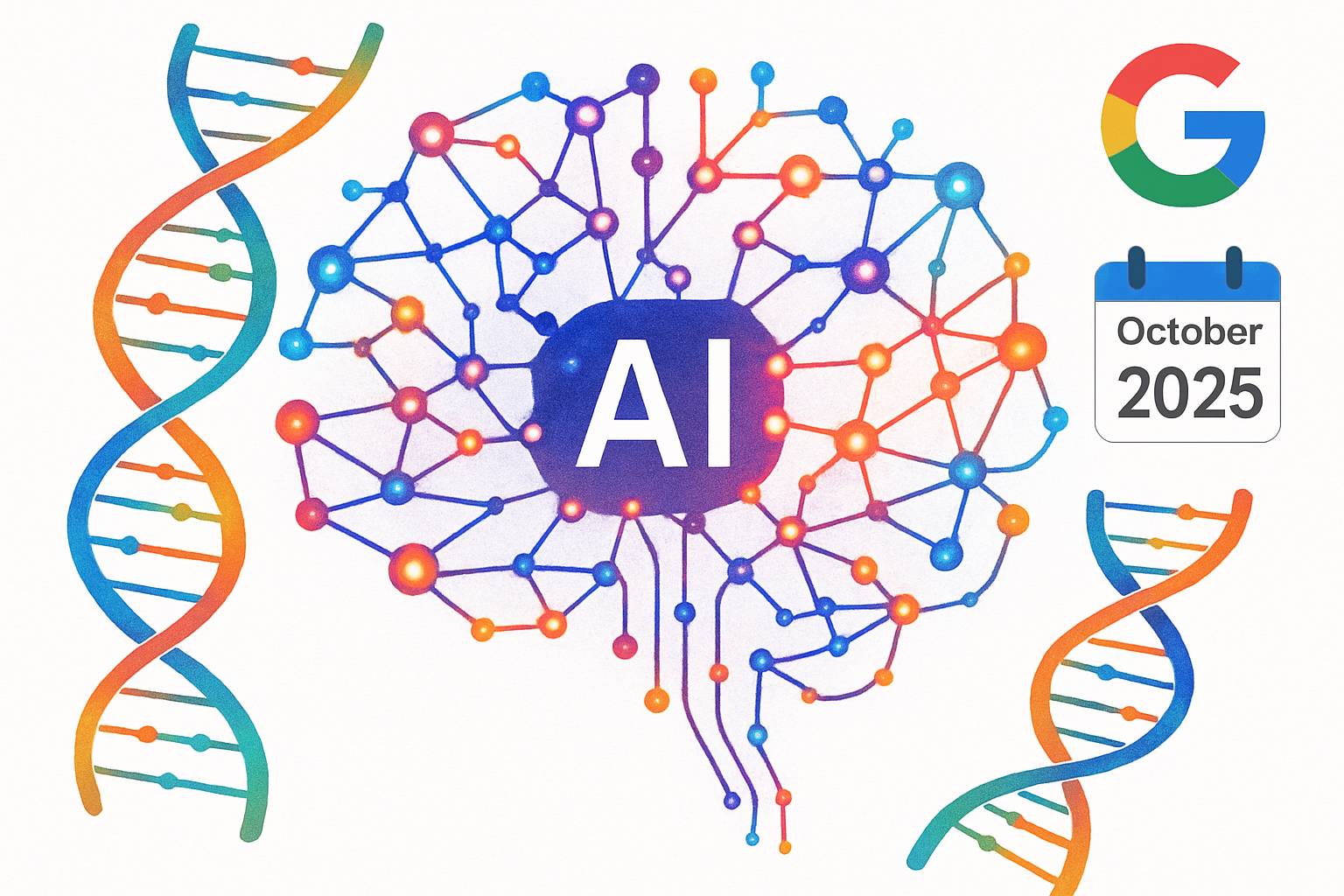
AI CERTS
2 hours ago
Google’s Cell2Sentence AI and the October 2025 announcement

Consequently, researchers can query complex tumor biology using familiar language prompts instead of dense matrices.
Moreover, the system suggests drug interventions and ranks them by context relevance.
Early demonstrations impressed skeptical labs.
However, the dual-context virtual screen delivered the defining proof.
It spotlighted silmitasertib as a potential interferon-conditional amplifier of antigen presentation.
In vitro tests at Yale showed roughly fifty percent higher MHC-I display when combined with low interferon.
Therefore, many analysts hail the work as a medical research breakthrough in AI-guided oncology.
Still, authors warn that the findings remain strictly preclinical.
Subsequently, this article examines the technology, evidence, and future implications for therapy pathway discovery.
C2S Model Release Context
Initially, Cell2Sentence research appeared on bioRxiv in April 2025.
Meanwhile, engineers continued scaling experiments until the official October 2025 announcement and public model release.
Google Research, Google DeepMind, and Yale collaborated across compute, data curation, and validation.
Furthermore, the team released weights, code, and documentation under permissive licenses on Hugging Face and GitHub.
In contrast, many proprietary biomedical models remain locked behind paywalls.
Consequently, the October 2025 announcement gained wide media coverage and CEO endorsement.
- Flagship model size: 27 billion parameters.
- Training corpus: over one billion tokens across 57 million cells.
- Virtual compounds screened: more than 4,000.
- Observed antigen presentation increase: roughly 50 percent in vitro.
These release details underscore transparent science and rapid adoption.
However, the next section explains the representation trick enabling that adoption.
Inside Cell Sentence Tech
At its core, the platform converts each cell’s gene expression vector into a ranked gene list, or cell sentence.
Consequently, standard language models can process high-dimensional biology without architectural changes.
Moreover, this approach unifies literature tokens with experimental signals, enabling deeper cellular analysis across heterogeneous datasets.
In contrast, classical pipelines rely on matrix factorization and struggle with sparse data.
Scaling to 27B parameters unlocked what authors call conditional reasoning.
Therefore, the model infers immune-dependent drug effects that smaller variants miss.
Researchers highlighted this leap during the October 2025 announcement, stressing that scale mattered as much as data.
These technical foundations explain the model’s predictive power.
Subsequently, we explore how the dual-context screen used that power for therapy pathway discovery.
Dual Context Screening Method
The dual-context virtual screen compared patient tumor cells with immune presence against immune-neutral cell lines.
Consequently, the algorithm prioritized drugs showing context-specific antigen presentation boosts.
Silmitasertib emerged as the top hit after the platform evaluated more than 4,000 compounds.
Additionally, ranking incorporated literature embeddings, further demonstrating a powerful bioinformatics application at scale.
During the October 2025 announcement, project leaders showcased ranking dashboards and reproducible code notebooks.
Furthermore, independent researchers replicated the screening workflow within hours using released containers.
Subsequently, they confirmed that silmitasertib scored highest when low interferon context was specified.
This reproducibility reinforced confidence in the October 2025 announcement and the underlying methodology.
Together, these results illustrate how AI accelerates therapy pathway discovery at unprecedented speed.
However, computational predictions mean little without laboratory validation, as the next section details.
Validation And Lab Data
Yale scientists exposed neuroendocrine tumor cells to silmitasertib, interferon, and combined conditions.
Meanwhile, flow cytometry measured surface MHC-I levels as a proxy for antigen presentation.
Results showed a roughly fifty percent increase in presentation when both agents were applied together.
Moreover, dose response curves indicated synergistic amplification rather than additive effects.
The team emphasized that these figures represent an early medical research breakthrough but not clinical evidence.
Nevertheless, data shared during the October 2025 announcement allowed peers to scrutinize gating strategies and replicate assays.
Thus, wet-lab confirmation strengthened claims arising from computational cellular analysis.
Consequently, stakeholders across industry took notice, which the following section explores.
Industry And Research Impact
Pharma executives quickly examined licensing paths for silmitasertib and adjacent compounds.
Additionally, immuno-oncology startups began integrating C2S-Scale checkpoints into their own bioinformatics application pipelines.
Sundar Pichai framed the work as a milestone, while outlets called it an AI moonshot.
In contrast, cautious commentators reminded investors of the long translational road ahead.
Even so, the October 2025 announcement shifted perception of large models from chat interfaces to laboratory collaborators.
Market interest signals growing demand for skills in multimodal model deployment.
Therefore, professionals should evaluate emerging training options, discussed in the next section.
Opportunities And Key Caveats
Engineers can extend the architecture to microbiome data, epigenetics, and spatial transcriptomics.
Moreover, every extension opens new avenues for therapy pathway discovery and refined cellular analysis.
However, dataset biases, batch effects, and uncertain pharmacology remain serious limitations.
Consequently, rigorous benchmarking and governance are essential before any medical research breakthrough reaches patients.
Authors reiterated during the October 2025 announcement that the project supplies hypotheses, not approved treatments.
Professionals can deepen relevant skills through the AI+ Healthcare™ certification.
These caveats and opportunities demand balanced evaluation.
Subsequently, the final section recaps actionable insights.
Skills For Future Work
Demand for domain-specific prompt engineering, data curation, and wet-lab collaboration skills is rising.
Meanwhile, cross-training in statistics, immunology, and software engineering enables efficient bioinformatics application deployment.
- Single-cell preprocessing and QC
- LLM fine-tuning workflows
- Flow cytometry assay design
- Regulatory documentation preparation
Consequently, organizations now allocate budgets for upskilling and targeted certifications.
Moreover, early adopters report faster project cycles and clearer experimental priorities.
Upskilling prepares teams to harness future medical research breakthrough moments.
Therefore, readers should consider formal learning paths before piloting large-scale models.
Ultimately, the October 2025 announcement demonstrated that language models can reason over cellular data and generate actionable hypotheses.
Additionally, quick lab validation showed tangible progress toward therapy pathway discovery, cellular analysis, and wider bioinformatics application.
Nevertheless, preclinical status and data biases require cautious optimism.
Therefore, professionals should follow replication studies and pursue credentials like the earlier linked AI+ Healthcare™ certification.
Action now positions teams to capitalize on the next medical research breakthrough.
Start today by exploring training, reviewing open models, and contributing to reproducible science.



